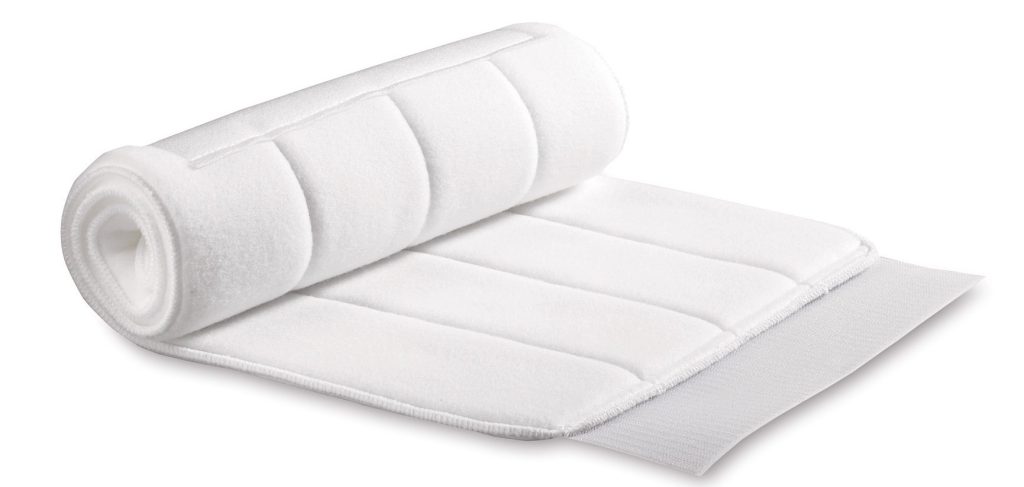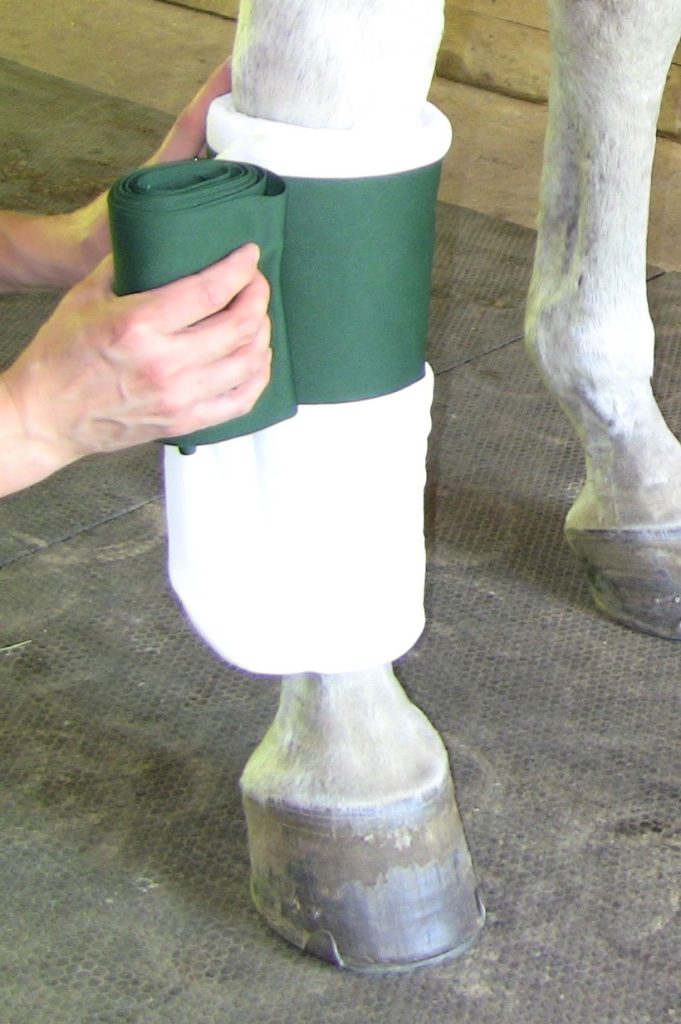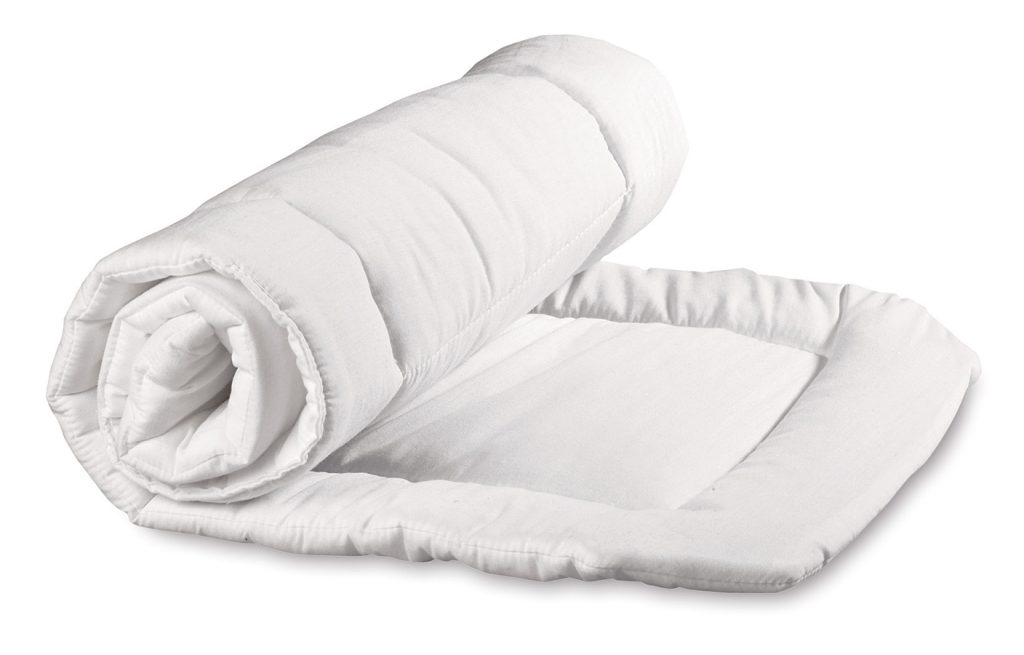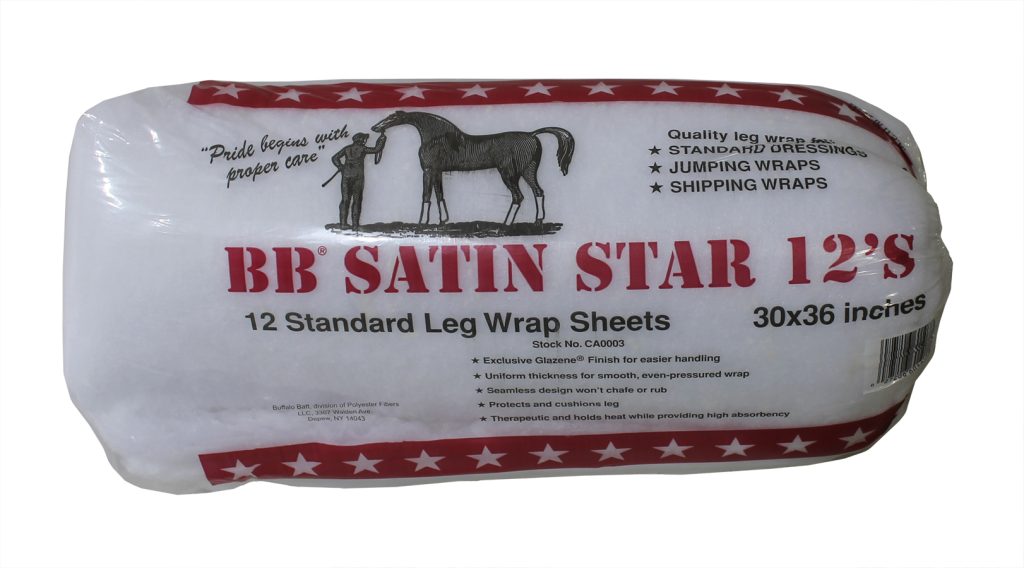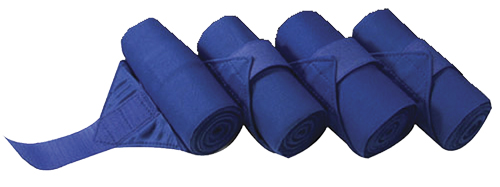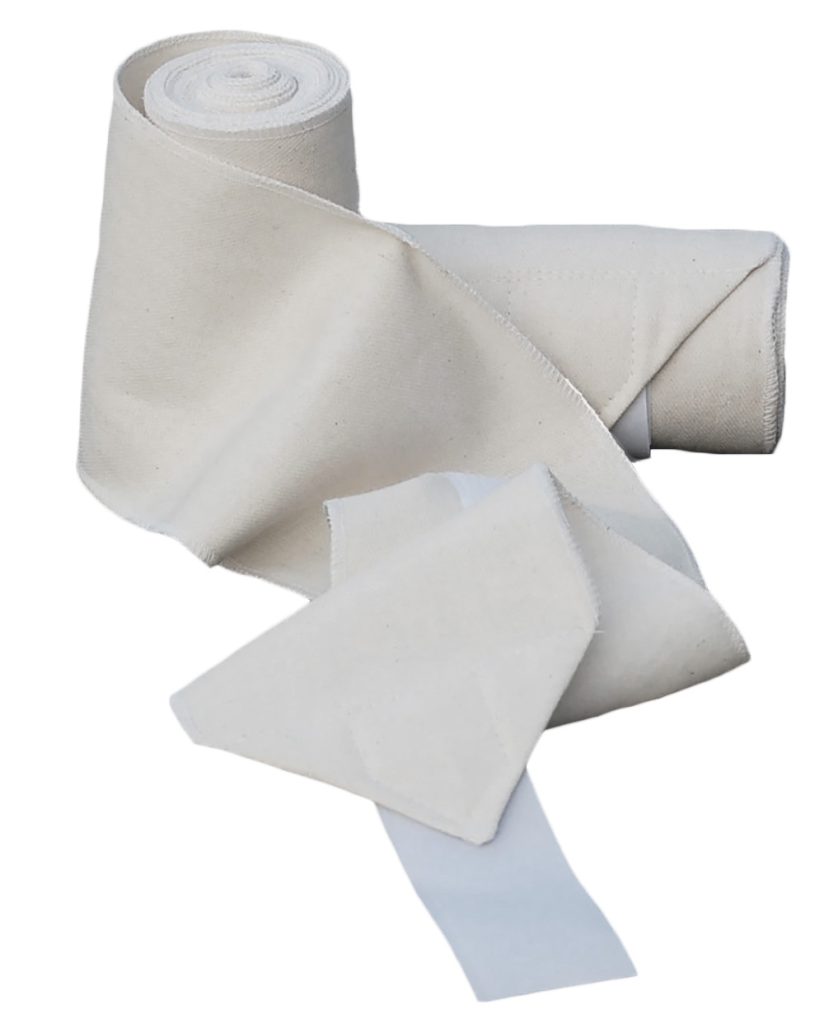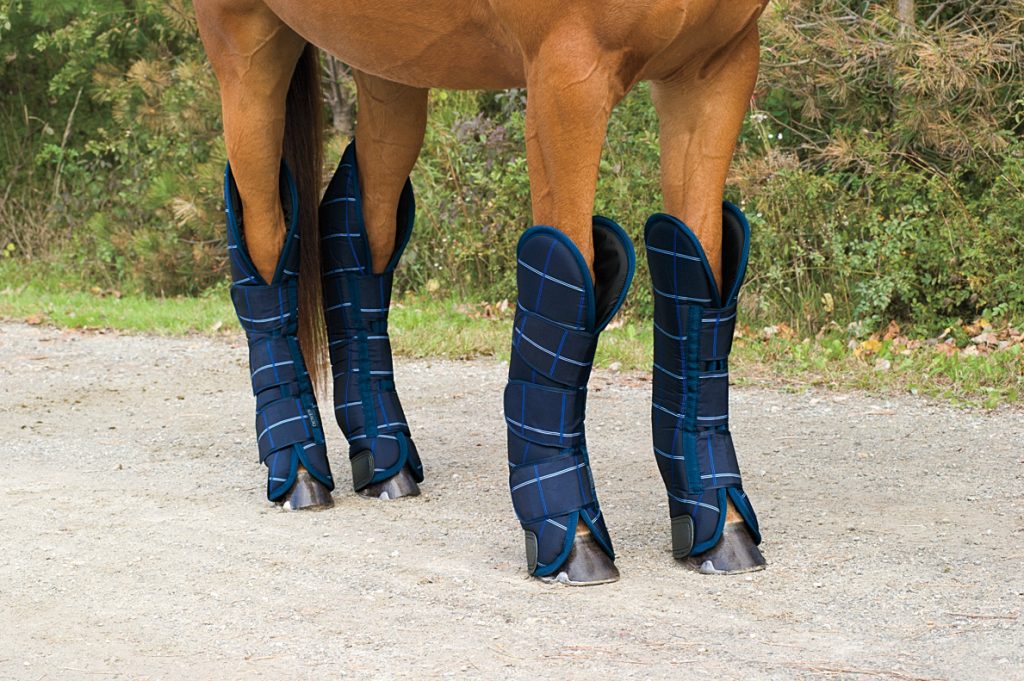One of our Product Advisors mentioned recently that a customer was confused about wrapping terminologies. New to horses, this customer wanted to know what constitutes a wrap and what constitutes a bandage. What should she have on hand, and why?
We realized that the equestrian industry, Dover Saddlery included, tends to use the terms “bandage” and “wrap” interchangeably when referring to both the “ingredients” of wraps and the types of wraps. No wonder this customer was confused! So this month we will cover two of the three types of wraps we commonly find in active performance horse barns regardless of discipline: standing wraps and shipping wraps. Next month, we’ll cover exercise wraps.
Standing Wraps
Undoubtedly the most important type of wrap any horse owner can have the materials to create, standing wraps are a significant tool in treating leg issues and concerns. Standing wraps are worn by a horse when it is stabled (standing). They can be used to help protect an injury or add support, hold wound dressings in place, reduce or prevent “stocking up” (edema) after a strenuous workout or a long haul, and they can be used to cover a poultice while it draws heat and inflammation.
A standing wrap consists of padding topped by a stable bandage. The padding may be called a leg quilt, leg wrap, combo wrap, pillow wrap or No Bow wrap, or it can be comprised of layers of cotton sheeting. The padding is intended to cover a horse’s leg from just below the knee or hock to the bottom of the fetlock joint. As such, leg quilts and leg wraps are offered in widths from 10 to 18 inches. They are usually sold in pairs because most ponies and horses require shorter wraps on their front legs and longer wraps on their hind legs.
The type of padding used depends on personal preference for the materials and thickness. The person applying the wrap must feel confident and skilled in its feel, because seams, bindings, wrinkles and bunching can cause serious damage to a horse’s legs. If cotton sheeting is chosen for padding, it requires multiple sheets (6 to 10) stacked neatly for sufficient thickness. It will need to be folded lengthwise or widthwise to achieve an appropriate height. When applied correctly, any kind of padding helps distribute pressure and conforms to the horse’s legs.
Stable bandages are applied over the padding. Most commonly, stable bandages (sold in sets of four) are made of tightly knit synthetic fabric that offers little stretch and is designed to support. These bandages are generally about 12 feet long by 5½ inches wide for horses and about 6 feet long by 5 inches wide for ponies. Hook-and-loop closures keep them in place. The fun part about stable bandages is they come in all sorts of colors, and you can make yours unique easily with embroidered monogramming.
Traditionally, stable bandages are made of cotton flannel. This type is still favored by some people. Flannel bandages can be a good choice for use when a young horse or one unfamiliar with wearing wraps needs to become accustomed to their feel. Cotton flannel is more apt to tear and release the wrap rather than bind and tighten if a horse chews or pulls on it.
To prepare for a wound or injury, every horse owner should have the materials for standing wraps on hand. Even if the owner is not skilled at wrapping, a veterinarian may request the materials in an emergency. Standing wraps are usually applied in pairs (both front or both hind legs, if not all around) so the horse will not favor one leg and thereby stress the opposite leg.
Shipping Wraps
Shipping wraps are the tried-and-true method of protecting a horse’s legs during travel. Like standing wraps, shipping wraps are comprised of padding and stable bandages. They simply cover more of the horse’s lower legs, right down to the hooves so that the pasterns and coronary bands are protected. Commonly, shipping wraps are used with bell boots to further protect the horse’s hooves. Typically, shipping wraps require wider leg quilts than a horse needs for standing wraps.
Shipping boots are the easiest, quickest way to cover a horse’s legs during transport. However, for long trips, many professionals prefer the security, support and stability provided by shipping wraps.
Cautionary Notes:
- New to wrapping? Hands-on training from a knowledgeable instructor is a must for your horse’s safety. Wrapping of any kind must be done correctly to avoid common bandaging mistakes that can cause both temporary and irreparable damage.
- Consult your horse’s veterinarian in the presence of any lower leg injury or unprecedented or chronic swelling/edema.
- Fleece polo bandages are not safe substitutions for stable bandages and vice versa.
- Standing wraps should be checked periodically for shifting and for swelling in surrounding areas of the leg. They should be removed after twelve hours maximum unless otherwise directed by a veterinarian.
- Wraps should always be applied over clean, dry skin and hair.
Shop our wide selection of horse leg wraps here.
Are you a leg wrapping pro? Share your photos with us on Instagram and Facebook by tagging @doversaddlery!

